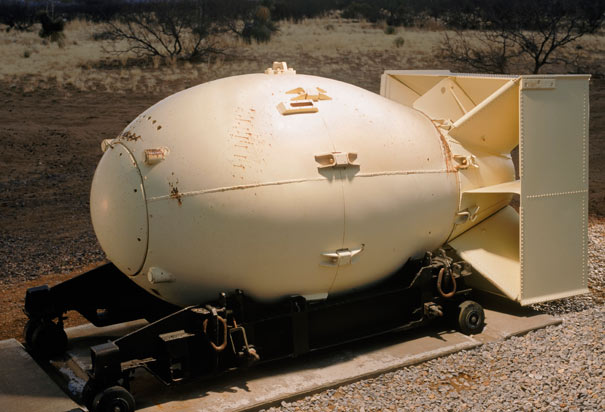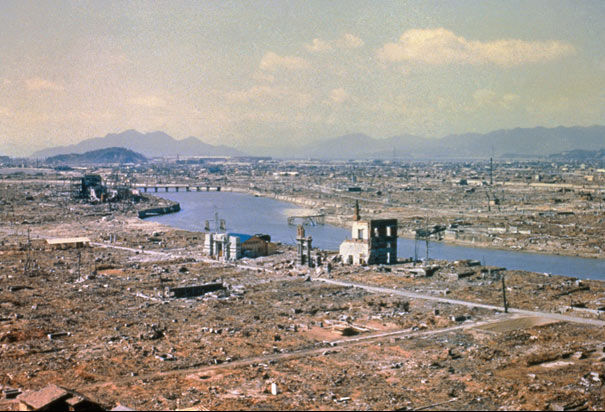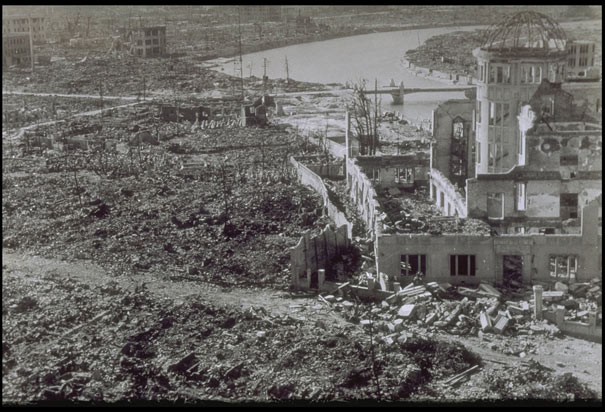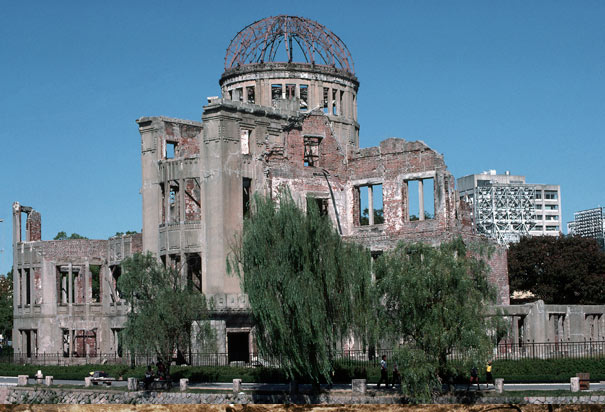ONLY 2 BOMBS DROPPED
ESTIMATED CASUALTIES AND LOSSES
90,000–166,000 killed in Hiroshima
60,000–80,000 killed in Nagasaki
Total: 150,000–246,000+ killed
Through modeling and mapping technologies, witness from above what happened in Hiroshima, Japan on Aug. 6, 1945.
The use of the atomic bomb at the end of World War II irrevocably changed the course of history and put an unprecedented destructive force in the hands of man.

For several months, the US had dropped more than 63 million leaflets across Japan, warning civilians of air raids. Many Japanese cities suffered terrible damage from aerial bombings, some even 97% destruction. In general, the Japanese regarded the leaflet messages as truthful, however, anyone who was caught in possession of a leaflet was arrested by the Japanese government.
Leaflet dropped on Hiroshima before the atomic bomb, showing the names of 12 Japanese cities targeted for destruction by firebombing. Hiroshima was not listed. The other side contained text saying “we cannot promise that only these cities will be among those attacked…”

Replica of Fat Man Atomic Bomb: A replica of the atomic bomb dropped on Nagasaki, a plutonium-implosion bomb nick-named “Fat Man”. (Photo Credit: Corbis)
On August 6, 1945, during World War II (1939-45), an American B-29 bomber dropped the world’s first deployed atomic bomb over the Japanese city of Hiroshima.

Hiroshima Aftermath: March, 1946. Eight months after the atomic bomb was dropped Hiroshima still stands in ruins. (Photo Credit: Corbis)
The explosion wiped out 90 percent of the city and immediately killed 80,000 people; tens of thousands more would later die of radiation exposure. Three days later, a second B-29 dropped another A-bomb on Nagasaki, killing an estimated 40,000 people.
Japan’s Emperor Hirohito announced his country’s unconditional surrender in World War II in a radio address on August 15, citing the devastating power of “a new and most cruel bomb.”

Chamber of Industry and Commerce Building Standing in Destroyed Hiroshima: The Hiroshima Chamber of Industry and Commerce was the only building remotely close to standing near the center of the atomic bomb blast of August 6, 1945. It was left unrepaired as a reminder of the event. (Photo Credit: Corbis) 
Modern Day Hiroshima Memorial: Hiroshima Memorial Park seen with modern-day Hiroshima visible in the background. (Photo Credit: Corbis)

Atomic bomb mushroom clouds over Hiroshima (left) and Nagasaki (right)
By the Numbers: World War II’s atomic bombs CNN article (August 6, 2013)
Hiroshima atomic bomb attraction more popular than ever Updated June 1, 2014